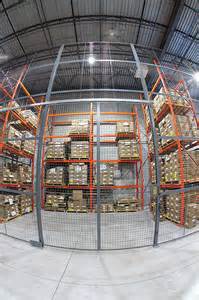
by Fronetics | Apr 9, 2015 | Blog, Leadership, Strategy, Supply Chain

Change management is the process of taking an individual or a group of people from a current state to a more desired state. Its recent prevalence, and often necessity, is heavily due to new technology and globalization. As humans we experience change constantly, on micro and macro levels. Today alone, around 350,000 babies will be born and 150,000 people will die. Gas prices might have dropped recently or your favorite flavor of potato chips might be discontinued. Stock prices rise and fall by the second. Nearly everything changes, yet the word change is often scary or stressful, especially when applied to the workplace.
Alan L. Milliken wrote in his article The Importance of Change Management in the Supply Chain that the key components of a successful business are process, technology, and people. He terms this the “Triad of Operational Excellence.” How is this “triad” involved in change management?
Process:
Sometimes process is the reason for implementing change. Are the processes in the supply chain preventing timely order fulfillment? Can the current process ensure proper, safe, and secure delivery? Are current processes compliant with regulations, nimble enough to weather unexpected change, efficient and modern enough to match innovative competitors? These are all good points to assess. When implementing change is it critical to understand a company’s current capabilities, what needs to be changed, and whether the current systems and finances can support change.
Technology:
Often change management can be spurred by a need for technological growth. If the end-to-end supply chain has antiquated practices, and one member of the chain is transitioning to modern technology, the rest of the players involved may feel the need to change despite being resistant to new technologies or feeling overwhelming by the cost and steps required to transition.
Some companies with decades or a century of business behind them, may be nervous about shifting to a social media driven, on-demand paradigm. There are many benefits to modernizing, and seeing the long-term view of how technology and media can assist business is critical. One company that has made changes to the way they present their business is the packaging supply company, Laddawn. Overhauling their website and providing customers with new purchasing capabilities has put them at the forefront amongst competitors. According to CEO, Ladd Lavallee, “It’s difficult for manufacturers to invest in service, or service technologies, because production can easily consume our time and money. But we need to make our customers’ lives easier if we want to keep winning their business in a shrinking world.”
People:
If leaders aren’t on board with a change management process their frustration or hesitation can seep into others’ mindsets. Studies have shown that emotional contagion occurs in society, and in business. People who cultivate a positive mind-set perform better in the face of challenge. When Bert’s Bee’s was rapidly growing on the global market, then-CEO, John Replogle, worked positive emotional contagion into his workplace, realizing, “Leaders, by virtue of their authority, exert a disproportionate impact on the mood of those they supervise.” He saw this change as an opportunity for people to grow as the company was growing.
In a sweeping meta-analysis of 225 academic studies, Sonja Lyubomirsky, Laura King, and Ed Diener found that happy employees have, on average, 31% higher productivity; their sales are 37% higher; their creativity is three times higher. According to executive coach and business consultant, Sara Regan, of Common Focus Consulting, thoughtful leadership during change is critical to success and employee satisfaction, “The biggest mistake I see leaders make is that they are too late in bringing others into the process. It usually creates more work in the end since it heightens anxiety and resistance then making the leader push harder instead of listen. The way in which leaders approach change impacts the end results but also the ongoing trust and engagement of the team.”
Certainly there are times when change is not necessary in a company, but when it is, aligning the process, technology, and people are key to reaching a new, more successful and desired state.

by Fronetics | Apr 9, 2015 | Blog, Leadership, Strategy, Supply Chain

Change management is the process of taking an individual or a group of people from a current state to a more desired state. Its recent prevalence, and often necessity, is heavily due to new technology and globalization. As humans we experience change constantly, on micro and macro levels. Today alone, around 350,000 babies will be born and 150,000 people will die. Gas prices might have dropped recently or your favorite flavor of potato chips might be discontinued. Stock prices rise and fall by the second. Nearly everything changes, yet the word change is often scary or stressful, especially when applied to the workplace.
Alan L. Milliken wrote in his article The Importance of Change Management in the Supply Chain that the key components of a successful business are process, technology, and people. He terms this the “Triad of Operational Excellence.” How is this “triad” involved in change management?
Process:
Sometimes process is the reason for implementing change. Are the processes in the supply chain preventing timely order fulfillment? Can the current process ensure proper, safe, and secure delivery? Are current processes compliant with regulations, nimble enough to weather unexpected change, efficient and modern enough to match innovative competitors? These are all good points to assess. When implementing change is it critical to understand a company’s current capabilities, what needs to be changed, and whether the current systems and finances can support change.
Technology:
Often change management can be spurred by a need for technological growth. If the end-to-end supply chain has antiquated practices, and one member of the chain is transitioning to modern technology, the rest of the players involved may feel the need to change despite being resistant to new technologies or feeling overwhelming by the cost and steps required to transition.
Some companies with decades or a century of business behind them, may be nervous about shifting to a social media driven, on-demand paradigm. There are many benefits to modernizing, and seeing the long-term view of how technology and media can assist business is critical. One company that has made changes to the way they present their business is the packaging supply company, Laddawn. Overhauling their website and providing customers with new purchasing capabilities has put them at the forefront amongst competitors. According to CEO, Ladd Lavallee, “It’s difficult for manufacturers to invest in service, or service technologies, because production can easily consume our time and money. But we need to make our customers’ lives easier if we want to keep winning their business in a shrinking world.”
People:
If leaders aren’t on board with a change management process their frustration or hesitation can seep into others’ mindsets. Studies have shown that emotional contagion occurs in society, and in business. People who cultivate a positive mind-set perform better in the face of challenge. When Bert’s Bee’s was rapidly growing on the global market, then-CEO, John Replogle, worked positive emotional contagion into his workplace, realizing, “Leaders, by virtue of their authority, exert a disproportionate impact on the mood of those they supervise.” He saw this change as an opportunity for people to grow as the company was growing.
In a sweeping meta-analysis of 225 academic studies, Sonja Lyubomirsky, Laura King, and Ed Diener found that happy employees have, on average, 31% higher productivity; their sales are 37% higher; their creativity is three times higher. According to executive coach and business consultant, Sara Regan, of Common Focus Consulting, thoughtful leadership during change is critical to success and employee satisfaction, “The biggest mistake I see leaders make is that they are too late in bringing others into the process. It usually creates more work in the end since it heightens anxiety and resistance then making the leader push harder instead of listen. The way in which leaders approach change impacts the end results but also the ongoing trust and engagement of the team.”
Certainly there are times when change is not necessary in a company, but when it is, aligning the process, technology, and people are key to reaching a new, more successful and desired state.

by Elizabeth Hines | Apr 8, 2015 | Blog, Leadership, Strategy

Mergers and acquisitions are increasingly popular strategies toward growth; however, 40% to 80% of mergers fail to meet objectives. M&A is complicated, and goes beyond simply “the process of buying a company.” At its heart it is a strategic selection of competencies that fill a void in a company’s offering, geography, technology, or industry area of focus. It’s wise to think about whether the time, money, and energy are ultimately going to pay off, literally and figuratively.
There are some critical things to consider before courting a merger or acquisition. Be a leader by asking the tougher questions internally rather than focusing your team on an outside “target”:
- Is there clarity around why a merger or acquisition is being considered? Will your organization reap strategic benefits or is this potential change only going to bring bonuses to the executives?
- Can your reorganization be better served by forming a strategic alliance instead? In this way, you get what you need without other non-strategic pieces that cloud merger and acquisition return on investment.
- Is there a licensing strategy that would work better than an acquisition strategy? Again, you can reach a beneficial goal without the expensive and time-consuming complications of a merger or acquisition.
- Are there other ways to access the marketplace, the capabilities, or the geography that you desire from the acquisition target?
After examining these questions, if the strategic decision points to a merger or acquisition, then strong leadership is critical. In the Deloitte report, The Leadership Premium, a survey of 400 stock market analysts ranked “senior leadership team effectiveness” as second only after “financial results” as the top criteria for judging company success. A detailed review of 94 different mergers revealed that leaders who oversaw a successful merger could:
- motivate others
- influence others
- build relationships
- develop others
- act with integrity
- show adaptability
- focus on customer needs
If acquiring leaders haven’t properly engaged with the target company before, during, and after an acquisition or merger, the likelihood of success declines. Confidence among employees of the acquiring and target companies can waiver throughout the acquisition process, and the same can happen during a merger. More than ever people will look to leadership for answers and guidance. Employees ask themselves: will I lose my job? Will I need to relocate? Will my position change? Will the workplace culture change? These answers will need to come, and for many employees, the earlier the better. A study found that “two of the top five most common reasons for M&A failure were down to management. These reasons were: poorly managed integration of people and culture (60%) and poorly managed integration of systems and processes (54%).”
From target identification to post-deal integration, leaders must become more involved with the steps necessary to make a merger or acquisition successful. Without such leaders, and their willingness to engage and guide, there could be no deal, or a very sour one.

by Elizabeth Hines | Apr 8, 2015 | Blog, Leadership, Strategy

Mergers and acquisitions are increasingly popular strategies toward growth; however, 40% to 80% of mergers fail to meet objectives. M&A is complicated, and goes beyond simply “the process of buying a company.” At its heart it is a strategic selection of competencies that fill a void in a company’s offering, geography, technology, or industry area of focus. It’s wise to think about whether the time, money, and energy are ultimately going to pay off, literally and figuratively.
There are some critical things to consider before courting a merger or acquisition. Be a leader by asking the tougher questions internally rather than focusing your team on an outside “target”:
- Is there clarity around why a merger or acquisition is being considered? Will your organization reap strategic benefits or is this potential change only going to bring bonuses to the executives?
- Can your reorganization be better served by forming a strategic alliance instead? In this way, you get what you need without other non-strategic pieces that cloud merger and acquisition return on investment.
- Is there a licensing strategy that would work better than an acquisition strategy? Again, you can reach a beneficial goal without the expensive and time-consuming complications of a merger or acquisition.
- Are there other ways to access the marketplace, the capabilities, or the geography that you desire from the acquisition target?
After examining these questions, if the strategic decision points to a merger or acquisition, then strong leadership is critical. In the Deloitte report, The Leadership Premium, a survey of 400 stock market analysts ranked “senior leadership team effectiveness” as second only after “financial results” as the top criteria for judging company success. A detailed review of 94 different mergers revealed that leaders who oversaw a successful merger could:
- motivate others
- influence others
- build relationships
- develop others
- act with integrity
- show adaptability
- focus on customer needs
If acquiring leaders haven’t properly engaged with the target company before, during, and after an acquisition or merger, the likelihood of success declines. Confidence among employees of the acquiring and target companies can waiver throughout the acquisition process, and the same can happen during a merger. More than ever people will look to leadership for answers and guidance. Employees ask themselves: will I lose my job? Will I need to relocate? Will my position change? Will the workplace culture change? These answers will need to come, and for many employees, the earlier the better. A study found that “two of the top five most common reasons for M&A failure were down to management. These reasons were: poorly managed integration of people and culture (60%) and poorly managed integration of systems and processes (54%).”
From target identification to post-deal integration, leaders must become more involved with the steps necessary to make a merger or acquisition successful. Without such leaders, and their willingness to engage and guide, there could be no deal, or a very sour one.

by Fronetics | May 21, 2014 | Blog, Talent
According to R.J. Bowman, author of The Secret Society of Supply Chain Management, demand for supply chain professionals exceeds supply by a ratio of six to one. Looking forward, it appears that demand for supply chain professionals will only increase. The U.S. Bureau of Labor Statistics estimates that demand for supply chain talent will increase by 26 percent between 2010 and 2020 – a growth rate that is twice as fast as 14 percent of all occupations.
In response to the demand for supply chain professionals, universities have introduced undergraduate majors, M.B.A. concentrations and even entire degree programs dedicated to procurement, inventory management and global supply-chain strategy. The Wall Street Journal has even gone so far as to declare supply chain management the “hot new MBA.”

The University of New Hampshire Peter T. Paul College of Business and Economics is one university which offers MBA courses focused on supply chain management. This semester Fronetics has had the opportunity to work with students in one of the school’s supply chain management courses. Students in the school’s Supply Chain Management MBA course learn how to design, plan, and operate supply chains for competitive advantage; develop an understanding of how the key drivers of supply chain operations can be used to improve performance; and develop knowledge of logistics and supply chain methodologies and the managerial context in which they are used.
Over the next several weeks Fronetics will share topical supply chain management articles written by several of the MBA students. The students are inclusive of full-time graduate students and professionals who attend the MBA program part-time. The articles point to the diversity of this group of students as well as the student’s breadth of knowledge on supply chain issues.
A full list of the students’ articles follows below:




